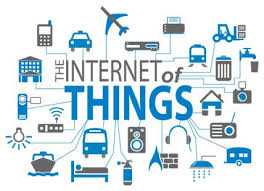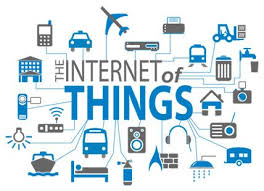
Farm irrigation equipment, donation boxes and oysters, connected by a technology called LoRa, are being seen as an alternative to the uses of the future of communications where mobile networks push bandwidth-heavy video to phones and pull data from self-driving cars.
Connecting devices cheaply over unlicensed spectrum and vast distances, needing very little power is possible with LoRa (for Long Range) and is among a clutch of narrow band technologies that is able to do so.
However the drawback is that instead of gigabytes most wired and mobile standards aspire to, they can only send small parcels of data.
But, advocates say, that may be more than enough.
"It turns out you don't need that huge an infrastructure, and it can be driven by small devices that are very smart and not very expensive," says Mike Cruse, CEO of Definium Technologies. This company is building LoRa-based devices for farmers, universities and mines.
Enabling owners to monitor, control and collect data from various devices remotely, the so-called Internet of Things (IoT) has long promised to hook up devices, from aircraft to hair dryers. According to PricewaterhouseCoopers, spending on the IoT will hit $6 trillion between 2015 and 2020.
But things have moved slowly. The number of connected devices was halved - including smartphones - it sees by 2020 to 28 billion, by Ericsson this year.
Solutions are too expensive and elaborate for what is needed are part of the primary reasons of what's holding things back, critics say. Being impractical in rural settings or beyond a user's budget is the involvement of connections that are used in most solutions.
LoRa involves technology where the thumbnail-sized radios send and receive data sell for a dollar or less and is a narrow band standard adopted by the likes of Cisco and IBM. This could be a solution ot he fast enhancement of IoT.
Called the Things Network, a global community of open-source LoRa gateways is being built by Dutch enthusiasts. Every couple of minutes to once every few hours, messages that are about a tenth of the size of an SMS are send and received by nodes. In cities from Colombia to Russia, their own experimental networks using the community's software have been rolled out by followers.
Starting next month, a $300 gateway - the router connecting the LoRa nodes to the Internet will be made available, says founder Wienke Giezeman. An average-sized city can be covered by half a dozen such nodes.
"This," he says, "is going to push the next phase of growth."
Apart from LoRa, other narrow band technologies are also hitting the market.
Sigfox, a French firm, which has raised $150 million from companies including Samsung Electronics, a proprietary U.S. technology run by a company called Ingenu and a British-based alliance, Weightless, are others working with similar technologies.
The traditional gatekeepers to the coverage these networks now claim, the telecoms companies are the biggest potential losers. Cellular networks would be used in only 1.5 billion of the 16 billion IoT devices it reckons will be connected in 2021, Ericsson says.
(Source:www.reuters.com)
Connecting devices cheaply over unlicensed spectrum and vast distances, needing very little power is possible with LoRa (for Long Range) and is among a clutch of narrow band technologies that is able to do so.
However the drawback is that instead of gigabytes most wired and mobile standards aspire to, they can only send small parcels of data.
But, advocates say, that may be more than enough.
"It turns out you don't need that huge an infrastructure, and it can be driven by small devices that are very smart and not very expensive," says Mike Cruse, CEO of Definium Technologies. This company is building LoRa-based devices for farmers, universities and mines.
Enabling owners to monitor, control and collect data from various devices remotely, the so-called Internet of Things (IoT) has long promised to hook up devices, from aircraft to hair dryers. According to PricewaterhouseCoopers, spending on the IoT will hit $6 trillion between 2015 and 2020.
But things have moved slowly. The number of connected devices was halved - including smartphones - it sees by 2020 to 28 billion, by Ericsson this year.
Solutions are too expensive and elaborate for what is needed are part of the primary reasons of what's holding things back, critics say. Being impractical in rural settings or beyond a user's budget is the involvement of connections that are used in most solutions.
LoRa involves technology where the thumbnail-sized radios send and receive data sell for a dollar or less and is a narrow band standard adopted by the likes of Cisco and IBM. This could be a solution ot he fast enhancement of IoT.
Called the Things Network, a global community of open-source LoRa gateways is being built by Dutch enthusiasts. Every couple of minutes to once every few hours, messages that are about a tenth of the size of an SMS are send and received by nodes. In cities from Colombia to Russia, their own experimental networks using the community's software have been rolled out by followers.
Starting next month, a $300 gateway - the router connecting the LoRa nodes to the Internet will be made available, says founder Wienke Giezeman. An average-sized city can be covered by half a dozen such nodes.
"This," he says, "is going to push the next phase of growth."
Apart from LoRa, other narrow band technologies are also hitting the market.
Sigfox, a French firm, which has raised $150 million from companies including Samsung Electronics, a proprietary U.S. technology run by a company called Ingenu and a British-based alliance, Weightless, are others working with similar technologies.
The traditional gatekeepers to the coverage these networks now claim, the telecoms companies are the biggest potential losers. Cellular networks would be used in only 1.5 billion of the 16 billion IoT devices it reckons will be connected in 2021, Ericsson says.
(Source:www.reuters.com)





